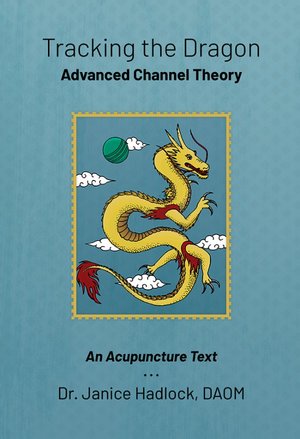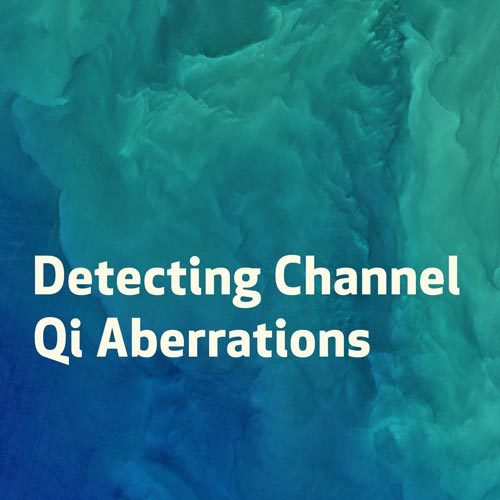Chapter One from Tracking the Dragon
Feeling Channel Qi
Feeling channel Qi is easy.
This article gives instruction in learning how to feel channel Qi, how to use that information to form a most accurate Asian Medicine diagnosis, and how to plan appropriate treatment.
Feeling Channel Qi in the Hand
It can be extremely difficult to detect the flow of channel Qi in one’s own body without simultaneously altering the flow as you go. Therefore, it is best to practice feeling the channel Qi of a friend or a fellow student.
It can be easiest, in the beginning, to feel channel Qi in the center of your palm, at acupoint P-8, by holding the center of the palm over a channel.
The palm should be held about one inch above the friend’s skin. The hand should not touch the skin. The friend may remain fully clothed: clothing does not interfere with the perceptions of channel Qi. The energy emitted by channel Qi passes through clothing in the same way that radio waves pass through the wall of a house.
Good channel locations on which to begin your practice are the lower leg portion of the Stomach channel, the arm portion of the Large Intestine channel, and the torso portion of the Ren channel. These sections of channel Qi don’t crisscross with other channels, and your friend can be comfortable, lying supine.
If the practice buddy has had any surgeries, severe injuries, or psychological issues that relate to the above-mentioned channels, either choose some different channels to practice on or choose a different friend. For example, a friend with a C-section scar may have moderately-to-severely reduced channel Qi flow in her entire Ren channel. It might be easier to work on her Large Intestine channel, instead unless she also has a history of a dislocated shoulder.
Step One: Noticing the Two-Directional Sensations of Channel Qi
Start by placing the palm of your hand over your friend’s ST-36.1Let your hand linger for a few moments over ST-36.
Don’t do anything with the energy in your hand. Be passive. Notice whether or not your hand notices any sense of a faint tingle, or even a faint movement, as if the idea of a gentle trickle of electrically charged air is moving against the palm of your hand.
If this is your first attempt at feeling channel Qi, you will probably feel nothing at all. That’s fine. You are actually feeling something, but you have not yet learned to recognize the sensation as anything significant.
Next, let your hand move slowly down the Stomach channel, towards the ankle: “downstream” from ST-36.
Relax your arm as you let the palm of your hand float down the path of the channel. Keep the palm of your hand about an inch or so away from the skin, hovering in the air, as you pass the center of your palm over the path of the channel.
Don’t spend too long: only use three or four seconds, no more, going from the knee to the ankle.
Keeping the palm of the hand about an inch or less above the surface of the skin, bring the hand back up the Stomach channel at the same speed, moving “upstream,” until you come to ST-36 again.
While you may not have noticed anything that you can refer to as “Qi flow,” you may have noticed that your palm felt a difference between moving it downstream (with the flow of channel Qi) and moving it upstream (against the flow of channel Qi).
If you did not feel anything different from how your palm felt when moving downstream as compared to upstream, repeat the above exercise twenty or thirty times.
If, after doing this twenty or thirty more times, you still do not feel any difference in the sensation visited against your hand while moving your hand slowly upstream and downstream, an inch above the channel, you were probably making the most common mistake: you were trying to push some internal force of your own onto the patient. You cannot hope to feel the patient’s channel Qi if you are trying to force your own thoughts, energy, or will onto the patient.
Feeling the Air
If you can’t feel anything different between moving your hand one direction along a channel’s path compared to moving it the other direction, try this: Hold your hand up in the air. Notice if you can detect, on your hand, the faint movement, if any, of the air in the room.
Notice this: while attempting to detect the movement of air with your hand, you never use your hand to “push” energy at the air. Instead, you wait quietly to notice any faint rustling that passes over the palm of your hand. This is the same type of perception used for feeling Qi: you let the outgoing energy in your hand become passive while you heighten your observational powers of the incoming energy.
If you become convinced that there is no air movement whatsoever in the room, try blowing gently across the palm of your hand: let a faint stream of breath pass over the side of your palm, crossing from your thumb over to the little finger. Notice the sensation.
A student who can feel channel Qi right from the start does not need to spend any time blowing on his hand. The experiments with feeling air do not demonstrate what channel Qi feels like. The experiments with feeling air are only presented as a tool for learning passivity. This can be helpful for students who are accustomed to “feeling” the world around them by pushing on it.
Common Errors
Pushing on a patient’s channel Qi
In my years of teaching, I’ve noticed that some students with a strong background in physical therapy or massage therapy have a very difficult time feeling Qi, in the beginning. When I let them practice on me (while I amp up the applicable sections of channel Qi as much as possible, to make it highly “feel-able”), I sometimes notice an ugly sensation being perpetrated against my own channels by a few of these students. The genuine irritation to my own channels causes me to sometimes snap at them, “Stop that!” Sadly, in this situation, some students have been more proud of their ability to have “done something” energetic than they have been chastened by having done something incorrect.
I suspect that some students are so accustomed to pushing on patients instead of letting their hands passively “feel” the patient, that they can’t help themselves: they force their own Qi onto patients instead of feeling the patients’ channel Qi.
In a similar vein, those of my students who have been taught, incorrectly, that “medical Qi Gong” consists of tampering with a patient’s channel Qi flow –as opposed to teaching the patient how to perform the Qi Gong exercises which might heal or restore the patient’s own channel Qi –often have a very hard time feeling and respecting the patient’s channel Qi flow. Instead, some of these students seem determined to influence the patient’s channel Qi, rather than “merely” notice it.
If your past training lies in this direction, or if you learn from the world by pressing on it instead of letting it come to you, practice trying to make your hand’s presence become invisible to your friend, as if you can feel him, but he can’t feel you. This may help.
Drugs
When teaching classes for the general public in which I have taught how to feel channel Qi, I have noticed that some people who are taking antidepressant medications have had difficulty in feeling channel Qi. I have no idea if there is a relationship between the medication and the inability to feel channel Qi. I only mention the observation. For the most part, my general-public students, very often people with no experience in medicine, let alone acupuncture or bodywork, have had no problems quickly learning to feel channel Qi.
Using the fingertips
Another common impediment to learning is using the fingertips instead of the palm of the hand. It is much easier to recognize the directional feelings of channel Qi at the center of the palm of the hand. Of course, channel Qi can be felt with any part of the body, and once you get good at it, a patient’s channel Qi can –and should –be felt from across the room, the moment the patient enters the treatment room. (Please be aware, to do so at any other, non-clinic, time may be a transgression of professional standards. It is just as foul to secretly spy on someone else’s channel Qi flow, as it is to, for example, read other people’s personal mail.)
But for beginners, I highly recommend using the palm of the hand, held above the surface of the skin, at a distance that ranges from a quarter of an inch to two inches.
Aside from these errors and exceptions, most students can start feeling the difference between “to” and “fro” channel Qi within about fifteen minutes. It may require several months to be able to feel channel Qi while holding your hand in one place, above a random acupoint. But learning to feel the difference between the sensations of moving downstream and upstream along the channel’s path is the thing that is easy: it’s also the thing that’s of greater importance.
What am I Trying to Feel? Describing the “Feeling” of Channel Qi
My students have described in many ways the sensation that feels “different” when going upstream (against the flow of channel Qi), as compared with going downstream (with the flow).
Some of my favorites are as follows:
“When I go upstream, it’s like rubbing velvet against the nap; downstream feels like rubbing velvet with the nap.”
And from another student: “When I go downstream, it’s like rubbing velvet against the nap; upstream feels like with the nap.” (Note: this is the opposite of the first observation.)
“Downstream feels cool; upstream feels warm.”
And the opposite from another student: “Downstream feels warm; upstream feels cool.”
“Upstream feels more prickly; downstream is smoother.”
And of course, “Downstream feels more prickly; upstream is smoother.”
“Upstream feels weirder”
“Downstream feels weirder.”
And so on. You get the idea: when attempting to describe, in words, a new, purely sensory experience, such as the sensation of channel Qi, metaphors differ, opposites abound. When a person, in striving to describe something inexplicable, describes it by comparing it to something else, the words don’t necessarily help. This lack of cogent description doesn’t really matter. All that really matters is that you learn to focus on the “something” that feels different depending on which way your hand moves. However, you describe it is fine –just so long as you can tell a difference between upstream and downstream.
What channel Qi really feels like is the electromagnetic side effect of a moving electrical current.
This moving current is the “Dragon” of Asian medicine, the moving dynamic that joins “heaven and earth.” The channel Qi in all living systems is the sum of the places where electromagnetic waves and fields (the unseen energy of the vibratory realm: heaven) are directed, by consciousness (ideas, life force instructions), to transition back and forth, as needed, into currents of electrons (formed, tangible matter: earth).
The current-like sensations given off at the more concentrated areas of the channels are palpable, even at a distance.
For purposes of this text, the “distance” referred to is “approximately an inch away from the skin.”
Sensations cannot be described in words –they can only be compared to other sensations. For example, one cannot describe the taste of an orange to a person who has never eaten an orange, so that the listener can say, “Oh. Now I know what an orange tastes like.” For that matter, one person might say “Oranges are sweet” and the next person might say “Oranges are sour.” Opposite descriptions, and both somewhat correct!
If three people tried to describe the taste of an orange, one person might say “bright and refreshing,” another might try “acidic like a lemon, only sweeter,” and a third might say, “slightly pulpy, but squirty with juice.” But for a fact, despite their best descriptive efforts, the listener will have no idea whatsoever of what an orange tastes like.
Each student must experience for himself/herself what channel Qi feels “like.” But in the end, it doesn’t really matter what it feels “like.” The important thing is to be able to feel it.
Very often, after about ten minutes of slowly moving his hand back and forth over the channel and noticing the difference between the upstream and downstream sensation, and then just holding the hand in one location while the Qi runs past his hand, the student blurts out, “I think I could feel this before, but I didn’t know that it was something with a name!”
Yes. Channel Qi is very easy to feel.
On the other hand, students often have the opposite response: “I think I’m feeling something, I think, but I’m not sure it’s channel Qi; I’m afraid I might just be imagining that I’m feeling something.”
Building Confidence
To help those students who are doubtful of their ability to feel channel Qi, I sometimes have students feel the channel Qi of a patient during “rounds” at the school’s clinic. In “clinical rounds,” the licensed instructor treats the patient, while up to five students observe at close range. In clinical rounds, we can ask the students to participate in a minimal manner: feeling the pulse and/or observing the tongue.
If during rounds, I silently notice that a patient's channel Qi has an obvious blockage, I might make use of the situation in order to help students gain confidence in their channel-Qi detection skills. I don’t tell the students that one of the channels is awry. I innocently name two of the channels and ask the students to quickly run their hands upstream and downstream, over the paths of those two channels, just for practice. I also ask that, if they notice anything curious in the channels, they silently make of note of it in their charts.
I may even casually remind the students to always maintain a professional, reassuring expression on their faces, and not linger too long while observing the tongue, pulse, and channel Qi. My real motivation in asking them to keep a poker face is that I don’t wish them to “give anything away” to their fellow students. As I remind the students to make a quick note on their own student copies of the patient’s chart about the condition of the channel Qi flow, the patient has no idea that I am requesting anything out of the ordinary.
Then, after inserting needles or other appropriate treatment for the patient, the students and I congregate in the discussion room. There, I ask the students to place their notes on the table. I ask the students to take turns going around the table, telling their classmates what they thought of the channel Qi, as supported by their notes.
And then, amazing to the students, they discover an unexpected, and highly comforting, uniformity of student observations! All the students will have felt the exact same “something curious” or “something wrong” at the exact same place. Even the students who, days earlier, had meekly protested, “I’m not sure; I don’t think I can feel Qi; I don’t know what I’m doing,” have to admit –they felt “something is different” or “wrong” at the exact same location as their fellow students also felt that “something is different” or “wrong.”
Sometimes I have to repeat this group experiment two or three times before the most self-doubting student is willing to admit that he or she is indeed feeling Qi –or is at least feeling the same thing that everyone else is.
The curious thing is that these students don’t need to have been “following” the flow of Qi, necessarily (a skill described later in this chapter). They were just moving their hands up and down a channel, trying to notice if they could feel anything. And despite their doubts, they all felt the same thing, and could identify one specific area as “wrong.”
While some students might never get the opportunity to experience the above “group” response, the very fact of this easily obtained uniformity in self-doubting students should serve to encourage every student to trust what he feels.
If you doubt your Qi-feeling ability, practice, practice, practice. For some people, as much as thirty minutes of practice is necessary.
If, after ten or fifteen minutes, you truly feel no difference at P-8when moving your hand in one direction along a channel, and then in the opposite direction, don’t worry about it. Try feeling channel Qi on a different person. Sleep on it. Sometimes we need a little sleep to process new sensations. The next day, try again. Practice a little every day, and very soon, you will be able to notice the difference between going with the flow and going against the flow.
Step Two: Associating the Two Different Sensations with Channel Direction
Once you can feel a difference when you move your hand above the channel Qi, first one direction, and then the other direction, associate those feelings with what you already know about the “correct” direction of channel Qi flow.
For example, you already know that the direction of the Large Intestine channel flow goes from the wrist to the shoulder. Therefore, the way that the channel Qi feels to you when you move your hand slowly over the path of the Large Intestine channel from the wrist to the shoulder, is going “with the flow.” No matter what words you might use to describe the actual sensation, the wrist to shoulder direction is “going with the flow.” We are assuming, of course, that your friend is healthy and has no history of significant injuries along the path of this channel.
Oppositely, the way that the channel Qi feels in the Large Intestine channel when you run your hand in the opposite direction, from the shoulder to the fingers, is how to channel Qi feels when you are “going against the flow.”
“With” the flow and “against” the flow will feel the same in all people. If you can teach yourself to identify a sensation as being “with” the flow, you will be able to recognize this same sensation in anyone when your hand is moving “with” his flowing channel Qi.
Step Three: Going with the Flow
Once you have learned to recognize the sensation of channel Qi that is going “with the flow,” practice letting your hand be carried along by this sensation. Forget about the sensations that occur when your hand moves against the flow. Those were just training devices.
When you let your hand move at the same speed and direction as the energy that is travelling “with” the flow, your hand will be moving in the same direction as the channel Qi.
By following the flow of current with your hand, and comparing the flow with the healthy, normal paths you learned in school or in this book, you will be able to tell if the channel Qi is flowing correctly or if it is flowing sideways, out of the channel’s normal path, into another channel or into a divergent channel. You will be able to tell when a channel is running backwards, also called “running Rebelliously,” which is to say, in the opposite direction of the pattern you learned in school.
Practicing Passivity
Let your hand feel that it is being pulled along by the energy that is moving “with the flow.” Or you might think of this as matching the movement of your hand with the movement of the energy that you can feel. But letting your hand be pulled by the energy is far easier, and more accurate.
If your ability to be a passive observer is good, you might even feel pleasure, like the sweet in-the-moment feeling of drifting in a canoe, as your hand is “carried along” by the channel Qi under your hand.
A Dance Example of “Following Energy”
A good “following” dancer is able to abandon any preconceived notions as to where the leading partner is going to go. By cultivating perfect relaxation with regard to where the movement is going, the “following” dancer is able to float around the dance floor, “carried” by the leading partner. In our busy lives, it can be pleasant to just follow, pleasant to not be in charge, for a moment or two, now and then.
In much the same way as the dancer, the dragon tracker, by perfect abandonment of any intention for where his hand might be led, other than to keep it parallel to the surface of the patient’s skin, might begin to feel as if his hand could be being carried along by the patient’s channel Qi.
Practice
Practice feeling channel Qi, back and forth, on several channels, on several healthy people. Then, practice letting your hand be carried along by the channel Qi flow on as many people as you can. The more you do this, the more you will feel comfortable with the idea that your hand can move “with the flow.” Once you know how it feels when you’re going with the flow, you can let your hand float along above the channel Qi anywhere on a patient’s body. As you compare the direction of your hand’s movement with what you know to be the correct pathways of channel Qi, you will be able to see your hand move in a “wrong direction” when a channel is flowing aberrantly.
Assessment
For example, if your hand is resting over a patient’s Ren channel, and you feel your hand being carried up to Ren-13 and then being carried over to the Liver channel, you can be certain that something is amiss.
Or, if you are resting your hand over the patient’s Du channel and your hand is carried a short way up the spine and then propelled up into the air, away from the body, the patient has a problem.
Again, no matter how you might describe the sensations of moving channel Qi, all that really matters is that you learn to 1) discern the direction in which the channel Qi is moving (going “with” the flow), and 2) learn to let yourself be carried by the flow of that channel Qi. After you can feel and follow the direction and route in which channel Qi is flowing, you can compare that direction and route with the correct pathways.1That comparison is the assessment.
More Practice
If you aren’t sure what is meant by “follow the Qi with your hand,” put your hand close to your mouth. While blowing as gently and slowly as possible across the palm of your hand, move your hand at the same rate of speed as the breath. Breathe very slowly, and try to move your hand away from your mouth at the same speed as your breath. When your hand moves at the exact same speed and direction as your breath, you don’t perceive the moving air of your breath. Let your hand get the full length of your arm away from your mouth as it moves at the same speed as the breath. Imagine that the energy in the breath is pushing your hand along.
Next, bring your hand close to the mouth again. Blow across your hand again, in the same way, but do not move your hand. You can again feel the movement of the air passing over your hand.
You have now experienced two styles of “feeling” the breath. You detected the speed of the breath by noticing the rate at which your hand is “moved along” by your breath and you experienced the sensation of having the breath move against your hand. In the first case, with the moving hand, you have felt both the direction and speed of the breath. In the second case, when you left your hand in one position and let the air move across it, you also felt the direction and speed.
Feeling channel Qi can also be accomplished either by allowing one’s hand to be carried along by the flow channel Qi, or by holding the hand in one place and noticing the feeling of channel Qi moving across the hand.
I fear I’m making the learning seem far harder than it really is. Most of you won’t need to blow on your hands.
The most important thing to remember is:“don’t think about it.” As soon as you start getting all logical on yourself, you can’t be paying attention to your perceptions.
For example, consider the experience of listening to music: if you are busy thinking about what you are feeling, or describing to yourself how you feel when you listen to musician Jimi Hendrix, you will be missing the Jimi Hendrix Experience. Feeling channel Qi isn’t thinking about sensations: it’s having a direct experience of energy.
Thinking, or Not
Of course, as soon as you do know how to feel channel Qi, you might then have to think about what you felt coming from your patient’s channels. For example, if Qi was running the “wrong” way, or not running, you might need to ask yourself “Why?” Later chapters will help you answer this question. After you’ve felt the channel Qi, you will need to think about what the sensations might mean in terms of diagnosis and treatment. But while doing the actual feeling of channel Qi, don’t be thinking about what the channel Qi is supposed to be doing.
Again, for most people learning to feel channel Qi, all they need to do is practice moving their hands back and forth over a few channels. When they do this long enough, whether or not they know what Qi “feels like,” they do eventually feel a difference between the two directions. The difference is caused by running the hand either with, or against, the current of channel Qi. It doesn’t matter what words the brain comes up with to “define” the experience. All that matters, in the beginning, is that you are able to notice that some gentle force is moving in the patient, and it feels different when your hand moves “with” it than when you move “against” it. After that, practice letting your hand be carried along by the sensation that moves “with” the channel Qi –and notice where the sensation leads you. It will lead you along the paths, right or wrong, that the channels are taking.
The Width of the Channels
Channel widths vary. For example, the Stomach channel is fairly thin, less than an inch wide, as it passes over ST-41. But in the vicinity of ST-36, the channel can be more than three inches wide, in an adult. When you are following the flow of Qi with your hands, you will notice that sometimes there is a narrow “line,” only a quarter-inch wide, or so, where the Qi feels strongest. This line, in many cases, will follow fairly closely the Traditional theoretical “line” created by the sequentially numbered acupoints. In some places where channel Qi runs in a very wide path instead of a narrow path, it can be harder to feel the movement of the channel Qi.
For example, on the relatively wide band of channel Qi in the portion of the Urinary Bladder channel that flows down the back, the channel is wider than the two parallel rows of acupoints that run down the back. The medial points follow the area of decreased electrical resistance along the medial border of the channel, and the lateral points define the area of decreased electrical resistance along the lateral border of the channel. The relative width of this channel spreads the channel Qi somewhat thinly over the back. This channel width can make the channel Qi harder to detect, in this area, than the flow in a narrower channel –for the beginner.
In general, when trying to ascertain “where” the Qi is going, just do your best. Until you feel confident, you can start off by tracking the imaginary “line” that connects the “dots” of the acupoints.
Case study #1
Restless Leg at Night
(The following case study took place in clinical rounds. The students were very new at feeling channel Qi. They had been instructed in feeling channel Qi the week before, for a period of fifteen minutes before starting rounds. I do not know if any students had done any practicing at home. I know that a few of the students had done no practicing at all. I only mention this so that the reader will understand how quickly, and with how little practice, the students had mastered the art of feeling channel Qi.)
A Female, age 58, came into the clinic for increasing restless leg syndrome, at night, in her right leg. She was otherwise very healthy and fit.
Tongue and pulse diagnoses showed nothing remarkable. Although an intuitive pulse master might have been able to detect the source of her restless leg problem, there was nothing in the pulse reading to suggest a diagnosis. Her bearing was athletic and her demeanour cheerful.
While standing on the right side of the patient, while feeling her pulse, I noticed a channel Qi disruption. I hadn’t used my hands to feel her channel Qi; I just became aware of a sensation of blockage in the lower right quadrant of my torso. (Feeling ambient channel Qi gets easier, the more you attune yourself to it.) I asked all the students to, one at a time, run their hands very quickly over her left and right stomach channels, from approximately ST-19down to ST-36–while making sure to not influence her channel Qi in any way.
I innocently asked the students then and there if they’d noticed anything, and where. They gleefully answered as if with one voice, “There!” They were all pointing at an area a few inches below her navel, on the right side. Quickly considering the most likely reason for the blockage, given the location, I asked the patient if she’d had her appendix taken out.
“Yes,” she replied, “but that was years ago; I was a child.”
I answered, “It feels to all of us as if something right here (I pointed) is preventing energy from getting into your leg. It’s most likely the scar tissue from the appendectomy. May I take a look?”
She bared the abdomen in the suspect area. Right where we’d all felt the blockage, she had a moderately thin, quite long, an indented scar running perpendicular to the Stomach channel. The students gave little gasps of excitement. They’d been able to pinpoint a Qi blockage!
I explained to the patient, “Scar tissue, like rubber, is non-conductive: electrical currents can’t pass through. May I insert some acupuncture needles through the scar to see if you can get some energy moving along the surface of the metal needles, moving the energy through the scar tissue?”
I told her that I didn’t usually like to needle scar tissue on a person who’d never had acupuncture before. Unlike some styles of acupuncture, needling scar tissue is often very painful. I gave her the quickest possible version of the flashback sensations and surgical memories she might re-experience when the needles penetrated the scar and asked her if she was willing to let me try it.
She was game.
The main point of this case study is to demonstrate the uniformity of my student’s experience. Be encouraged by this.
As an aside, to make this case study clinically relevant above and beyond the issue of feeling channel Qi, here’s the conclusion: one week later, the patient returned to the clinic. Her restless leg syndrome was greatly reduced. Her symptoms had decreased the first night after the treatment and continued to improve.
During the second treatment, I needled through the appendectomy scar again, placing the needles in slightly different locations from before, but still passing the needles through the keloid tissue at a right angle to the line of the scar. This second time, the sensations she experienced were more like the normal sensations associated with acupuncture.
Case study #2
Wrist Treatment Sends Channel Qi to the Opposite Foot
The following case study occurred in my private practice.
A female, age 60, retired semi-professional golfer, came in for wrist pain. She had sprained her right wrist a few weeks before, and now she was slicing all her drives off the tee. I palpated the right wrist. Several carpal bones were displaced. I did some very gentle, Yin-type, Tui Na (Chinese medical massage/manipulation), and the bones slid nicely back into place. I could have sent her home, knowing that the next surge of channel Qi through the Large Intestine channel, at 5:00 the next morning, would give the wrist the energy it needed to keep the bones in place. Instead, I decided to be on the safe side and inserted a needle at the right-side LI-4to immediately increase the Qi flow through the wrist, thus strengthening the positioning of the restored carpal bones.
In just over two seconds (three seconds is about average for channel Qi to travel from LI-4 on one side of the body, to ST-45 on the opposite side of the body, following a needle insertion), she felt something in her toes on the left side. She asked me why the left side of her leg and her toes had tingled. I replied, “The side of the leg right here?” pointing out the path of the left Stomach channel on the lower leg. I continued, “And is it the second and third toes on the left side?”
She expressed surprise at my seeming prescience, but she agreed that I was exactly correct. I explained that the wrist needle was bringing up to speed the energy level in a current that flows up the arm to the face (Large Intestine channel), crosses over to the other side of the face, and then, on that other side, streams down the face, neck, torso and leg to the second and third toes (Stomach channel). She was pleased to know that her perceptions made sense according to Asian medical theory.
She asked why she’d felt the tingle during this treatment; in the past, she’d been needled at LI-4and had not noticed anything subsequent in her opposite leg and foot.
I explained that her wrist injury had been causing significantly diminished energy flow in the Large Intestine channel. This, in turn, was causing significantly diminished energy flow in the Stomach channel on the opposite side.
She was a very healthy person. Ordinarily, there was enough channel Qi in her channels that she did not notice the difference when a slight increase pulsed through the system in response to a needle at LI-4. But because she had been walking around, for a few weeks, with a considerable insufficiency in those two channels (because of the wrist injury), she was able to feel the change when a full measure of channel Qi coursed, once again, through channels that had been depleted.
I gave her an example that one of my professors had given to me. “If a cup is full, and you put more tea into it, the extra will spill over the sides. You still have only one cup of tea. Your amount of tea has not changed. But if your cup is empty, and someone pours tea into it, you will have a changed amount of tea. You can tell that you have something more than before.”
My patient was an athlete, and keenly aware of how her body felt. The sensations that she reported to me, and the sensations that many other patients have reported to me, have contributed to my appreciation for and personal knowledge of channels: channels do exist; they follow specific pathways.
More to the point, observant patients such as the one discussed above can sometimes feel channel Qi flowing in the locations described in the classic texts, even when they don’t know to expect it.
This case study makes this point: the conformity of the sensations experienced by patients, together with the matching sensations that we can feel with our hands, serve as a confirmation that we are not “just imagining” the existence and sensations of channel Qi.
Self-Doubt
Probably the biggest impediment to using channel diagnostics is self-doubt. A novice may doubt that the sensations he is experiencing are the “real thing.” But after overcoming the initial bout of thinking that feeling Qi is going to be very hard, most people can very easily feel channel Qi if it’s running in the expected pattern. The real problems with self-doubt usually arise in cases where a patient’s channel Qi is weak, missing altogether, running backwards, or attacking another channel.
I’ve worked with students and colleagues who do an excellent job of diagnosing channel Qi aberrations when the blockages are pretty straightforward. But these same practitioners, when confronted with something unexpected or unprecedented in their experience, suddenly don’t trust what they’re feeling.
Even colleagues who’ve been practicing this work for a few years will suddenly be hit by self-doubt when the signal behaves very strangely. They sometimes assume, in these cases, that they’ve lost the ability to feel channel Qi. In such cases, it’s far more likely that the problem (the inability to feel the channel Qi at some particular location) is coming from something going on with the patient, not the practitioner. Still, self-doubt does crop up easily.
Some of the self-doubts may arise from the fact that we are dealing with something unseen and most of us grew up thinking that feeling energy was impossible. As long as we think that we’re doing something that borders on the impossible, we are holding the door wide open for self-doubt.
Not so Amazing, Really
What we are doing when we feel channel Qi is not really that amazing. Many perfectly “normal” jobs require a similar level of sensory discretion.
For example, a musician, tuning his instrument, is listening for sound variations occurring at hundreds of vibrations per minute. If a violinist’s A string is tuned to resonate at 443 beats per minute instead of the tuning fork’s 440, he needs to be able to hear the irregular beat generated by the difference, and correct it.
It is said that Mozart once noticed more than one hundred notes and/or rhythmic variations in some bird’s simple cry –a bird song in which I probably would have heard three notes and two rhythms.
Likewise, some visual artists can discern extremely fine gradations of color that most people cannot see. I’ve seen people who work in a house-paint store matching color swatches with astounding speed and accuracy.
A tea taster can differentiate flavors that most palates don’t know exist.
These skills are impressive, but we do not doubt that they exist. Because we have been raised to think these enhanced levels of job-related sensory perception are perfectly reasonable, we don’t doubt that such attunement is possible.
In our job, we work with channel Qi. After practicing acupuncture for even just a year or two, most of us can easily feel when an inserted needle goes from “connected to nothing” to “connected with something.” When this happens, we say we’ve “Got the Qi.” There’s nothing really amazing about our ability to do this. This skill is only recognition of a sensation to which we’ve become attuned. There’s nothing amazing about it.
When we are feeling channel Qi by hand, from an inch or so away from the skin, we are only noticing the exact same sort of energy that we can easily learn to recognize when the channel Qi pulls on a needle. We’re just feeling it from a little farther away, without the medium of the needle.
Channel Qi is not a freakishly difficult thing to feel. In fact, when I run my hands over a patient and explain that I’m looking for an energetic glitch, I’m surprised at how often my patients say something along the lines of, “Well, I should hope so.” These patients are not surprised that I can feel channel Qi. They expect it. I’ve had patients who’ve said to me, “When I was out of town, I went to an acupuncturist who couldn’t even feel channel Qi! Can you believe it?”
We expect a violinist to know how to tune his violin, even though most of us do not have the sensory skills needed for such a job. Our patients have the right to expect us to know how to feel when we have “Got the Qi” or when channel Qi is flowing the wrong way, even if most people aren’t used to noticing channel Qi.
Looking Ahead
Direct perception of the channels is often the most accurate and elegant method of forming an exact medical diagnosis and treatment plan. All of the “pattern” diagnoses of Asian medicine, ranging from Five Elements to Eight Parameters, are, at root, labels for pathologies that are set in motion, and maintained, via the aberrant flow of channel Qi.
Channel Qi is the leader of the Blood, the leader, or driver, of all physical manifestation. Channel Qi is an electrical manifestation of waves set in motion, originally, by consciousness. These channels, in turn, generate physical manifestations (atoms and molecular structures) and the power to drive them into the correct behaviours. Channel Qi drives both the Yin (matter) and the Yang (energy) of our bodies, both the organs and their functions. All health issues that involve Yin, Yang, Qi, or Blood, or the Five phases of channel Qi can be most elegantly detected and treated by working directly with channel Qi for diagnosis and treatment.
In the realm of Asian medicine, the exact knowledge of where a patient’s channels actually are, and the quality of the movement, held up against the knowledge of where and how they are supposed to be flowing, can often tell a health practitioner the exact nature of the patient’s problem and, therefore, the exact treatment. Detecting the flow of channel Qi provides this exact knowledge. Almost anyone can learn to detect the flow patterns of channel Qi.
As the masters pointed out in the Nei Jing, “To beginners, it seems easy.”
It is easy to detect the sensations of a patient’s channel Qi and thereby derive an extremely accurate diagnosis and treatment plan.
As an aside, the hard part referred toin the Nei Jing, the part of channel work that masters “know is difficult,” is a spiritual goal not directly related to the practice of doctoring others. This “difficult” part of channel work is the attainment of complete control of one’s own consciousness, which then gives the ability to consciously regulate one’s own channels –holding the channels, and therefore the body, in pathways of perfect health in spite of pathogens, climate, injury, or toxins. At the highest level, one can control one’s own channels to the extent of consciously altering the body’s energetics in order to enter the breathless state, in which one’s energy and awareness can be consciously directed to leave and re-enter one’s own body at will, and/or manifest other masteries of the physical realm. The masters recognize that this aspect of “knowing the channel Qi,” which at the highest level involves the complete surrender of ego, can be very difficult to master.
Again, the easy part is learning to detect the flow of channel Qi in patients, and using that knowledge to determine an elegant and effective medical treatment. Even a beginning student can arrive at a highly accurate diagnosis and effective treatment plan by noticing errors in a patient’s channel-Qi flow pattern.
Sensing the flow of channel Qi requires only that one learns to recognize the distinct physical sensations emitted by the flow of channel Qi. Any person who is able to feel the sensation of gentle wind on his cheek, or who can tell the difference between the sensation of rubbing velvet one direction when compared to rubbing it the other way, should be able to quickly master the art of tracking the flow of channel Qi in a patient.
Then, if he knows the correct patterns of channel Qi flow, as described in the classics, he can quickly recognize if, and in what manner, the Qi flow in a patient is aberrant.
Other Courses By This Teacher
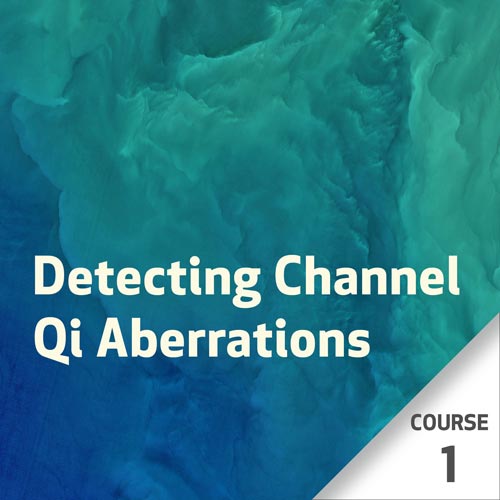

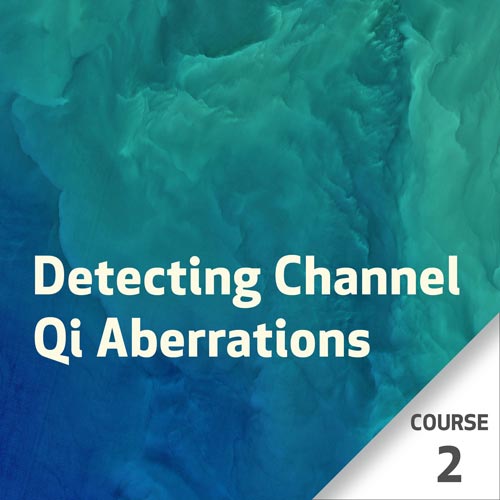





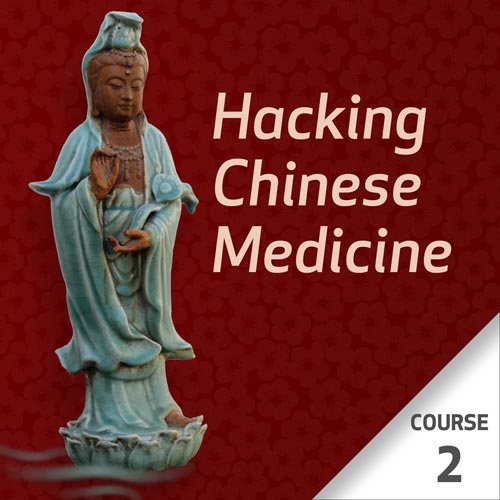



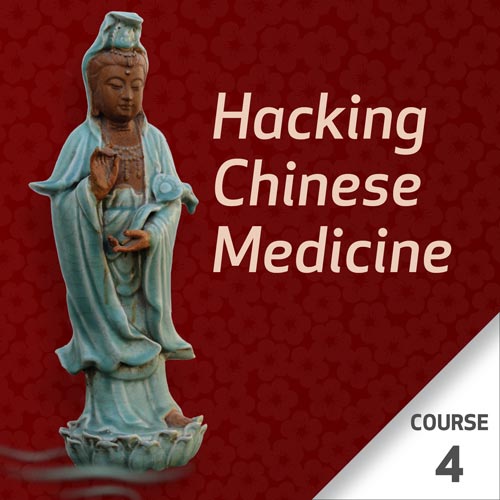

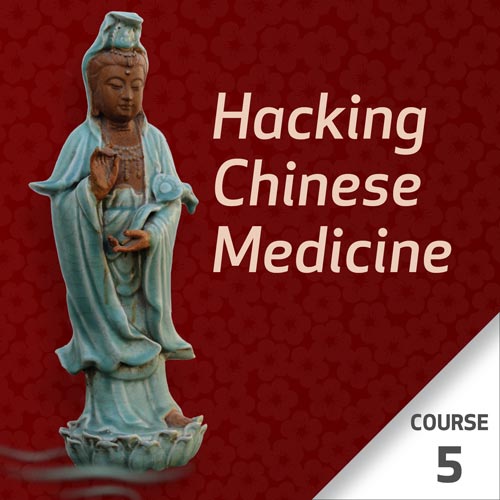



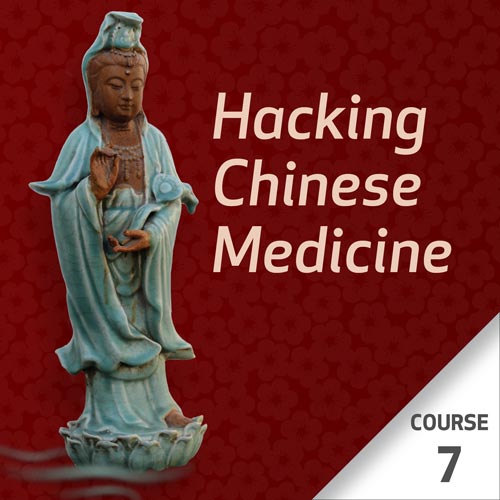



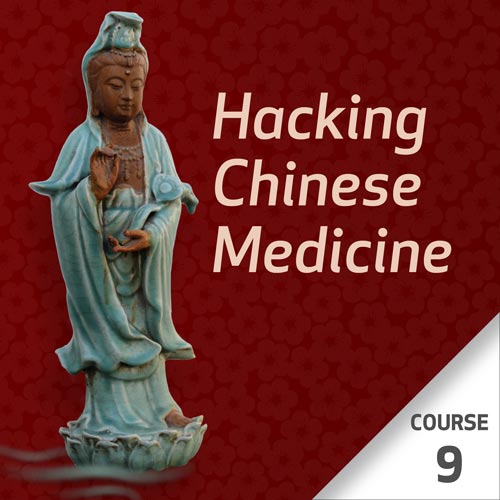





Overview
You can know exactly where to place acupuncture needles, and why.
Learn to detect, with your hands, the exact location of Channel Qi aberrations - the root of all mental and physical illness. Then discover specific styles of needle insertion that directly restore correct Channel flow at the point of the aberration – as opposed to hit-or-miss, hope-for-the-best treatments. Channel Qi aberrations, classically referred to as “Channel Qi Doesn’t Go Through,” are the energetic drivers behind all health problems.
Channel Qi blockages occur in highly specific, individualized locations – and you can detect these with your hands. These blockages force the Channel Qi into aberrant patterns, which then lead to compromised health. Stubborn physical or emotional blockages are only rarely diminished by distal-point or “indicated point” treatments. But when you breach these Channel Qi obstructions by strategic needling in the exact vicinity of the blockage, instantaneous healing often ensues.
You already have an innate ability to detect Channel Qi. Develop it.
Please note: It is highly recommended you complete at least one of these prerequisite items prior to completing this course: Watch a 1-hour recording of Janice's Advanced Channel Theory presentation and/or read the first 4 chapters of Tracking the Dragon, by Janice Walton-Hadlock. Registrants of this course should also try feeling Channel Qi prior to the course so that they have a sense of their ability.
Learning Objectives
- Anyone can learn to detect channel Qi, but it requires practice to understand what one is feeling. The demonstrations in this class will be directed at increasing confidence in recognizing the Channel Qi sensations experienced by the hands, and learning what the different sensations signify.
- To come away with a clear sense of how to feel Channel Qi and how to develop and test a treatment plan based on the aberrations in Channel Qi; learning confidence in one's ability to assess is also a key goal in this course, and this is best achieved through practicing.
- Learn to differentiate, using hand-detection, when Channel Qi is running correctly, backwards, or stopping.
- Learn to differentiate between the normal and healthy patterns of Channel Qi flow when a person is in parasympathetic, sympathetic, sleep, or dissociated (shock) mode.
- Learn needle insertion techniques that directly rectify Channel Qi aberrations.
Your Teacher

Janice Walton-Hadlock
Janice Walton-Hadlock, DAOM, L.Ac., is a professor at Five Branches University, and specializes in Channel Theory, Yin Tui Na, Psychology and Counseling; she is the founder of the Parkinson's Recovery Project, and is an author on topics relating to Channel Theory and Parkinson's.
Categories
Tags
Overview
“First inspect the channels, separating and following...then adjust them accordingly” – Su Wen
In this Level Two class, you will fine-tune the skills you learned in Level One, where you learned to follow the Channel Qi: Here you will learn to separate them, distinguishing between the various types of channel Qi.
Liver channel Qi gives off a very different signal than Spleen channel Qi. Kidney Channel Qi feels different from the Liver or the Spleen. Once you have even a mild sense for “following” the Channel Qi, you can quickly learn to tell the channels apart!
You'll learn to trust yourself when you feel unusual channel behaviors – such as Du Channel Qi responding to a blockage by floating up out of the body and into thin air – and understand why the patient with this pattern has profound deficiency symptoms that don’t respond to the usual tonics or stimulation.
Please note that Detecting Channel Qi Aberrations - Course 1, Level 1 is a prerequisite to this course.
Learning Objectives
- Differentiate between the sensations given off by the various channels, particularly the three Yin Leg channels.
- Learn to recognize patterns where a blockage on one side of the body (left/right) causes stimulation or trauma occurring on one side of the body and manifests as pain on the opposite side, sometimes in an “illogical” location.
- Learn how to coach patients in the use of acupuncture and/or Qi Gong to rectify channel attacking patterns in the three Yin Leg channels.
- Tangibly experience Du or Ren channel Qi aberrations in which channel Qi exits the body in response to a channel blockage, and learn how to treat them with acupuncture and/or Qi Gong.
Your Teacher

Janice Walton-Hadlock
Janice Walton-Hadlock, DAOM, L.Ac., is a professor at Five Branches University, and specializes in Channel Theory, Yin Tui Na, Psychology and Counseling; she is the founder of the Parkinson's Recovery Project, and is an author on topics relating to Channel Theory and Parkinson's.
Categories
Tags
Overview
Your key to unlocking the secret codes of Chinese medicine.
A very literate Chinese speaker has no more idea what is meant by “Lung Phlegm in the Liver” than does the average English speaker. For that matter, the word “wiry” and the concept of “Spleen pulse” don’t mean anything to the average Chinese speaker.
The words we use in Chinese medicine are not words, per se. They are code. “Liver,” as you well know, does not mean liver. For that matter, “Yin,” in the context of medicine, does not mean Yin. Damp certainly does not mean Damp. And Spleen Yang is present in the smallest, single-celled organism – an organism that does not have a spleen.
Your patient might tell to you, “I know all about Yin and Yang. The moon is Yin, males are Yang…” But these Taoist meanings have almost nothing to do with the way these words are used in the Chinese medicine code.
What does Yin and Yang mean to a Korean musician? To a traditional Taoist? To a Feng Shui practitioner? And all these different meanings are different still from what Yin and Yang mean to a TCM practitioner!
If you understand the way these code words work in TCM, and what they actually mean in plain English – which is not what you think – the whole world of Chinese diagnostics will suddenly make a whole lot of sense. It will even become something you can explain to your patient, using simple, obvious English.
Just knowing how the vocabulary actually works, something I never learned in my years of school, has made all the difference in my practice. I understand what I am doing. I am no longer just blindly following the dots.
This first class covers material in the first three chapters of Hacking Chinese medicine, and will introduce you to some of the more common usages of the “secret codes of Chinese medicine."
Learning Objectives
- Adding depth to an English-speaking practitioner’s understanding of the vocabulary and phraseology of Chinese medicine.
- Introducing the implications of channel theory from an electromagnetic, 21st century perspective.
- Explaining cryptic aphorisms, mistranslations, and the error accumulations of centuries.
Your Teacher

Janice Walton-Hadlock
Janice Walton-Hadlock, DAOM, L.Ac., is a professor at Five Branches University, and specializes in Channel Theory, Yin Tui Na, Psychology and Counseling; she is the founder of the Parkinson's Recovery Project, and is an author on topics relating to Channel Theory and Parkinson's.
Categories
Tags
Overview
This course will cover concepts about Channel Qi and outline the importance of Qi direction in making an accurate diagnosis. Feeling Channel Qi is easy. Although many practitioners feel it is difficult, the instructor will review how it can be acquired in practice. In detail, the theory of how to use and diagnose Channel Qi including the proper use of hands will be shared. Different concepts involving currents and the sensations given off by the Channel Qi will also be outlined.
The words that students have used to describe the sensations given off by the Channel Qi will be included.
Learning Objectives
- Depth will be added to an English-speaking practitioner's understanding of the vocabulary and phraseology of Chinese Medicine.
- The student will have a better understanding of the implications of Channel Theory from an electromagnetic, 21st-century perspective.
- The student will learn about cryptic aphorisms, mistranslations, and various error accumulations that have spanned over centuries.
Your Teacher

Janice Walton-Hadlock
Janice Walton-Hadlock, DAOM, L.Ac., is a professor at Five Branches University, and specializes in Channel Theory, Yin Tui Na, Psychology and Counseling; she is the founder of the Parkinson's Recovery Project, and is an author on topics relating to Channel Theory and Parkinson's.
Categories
Tags
Hacking Chinese Medicine - Course 2
Qi: The Most Important Code Word in Chinese Medicine
with Janice Walton-Hadlock
See In StoreOverview
Qi is a code word. It can take years for a student of Chinese medicine to begin to understand all the variations and permutations implied by the word “Qi”.
Even so, many practitioners of Chinese medicine fling this word at their patients. The imprecise and even incorrect use of the word “Qi” can lead to grave concerns on the part of patients who go home frightened by their “Qi deficiency” or puzzled about their “Stagnant Qi.”
By learning the ancient roots of this word, by reviewing the derivative forms of this word (Gu Qi, Zhong Qi, and so on), a practitioner can be reminded of ways to communicate with his patient in a manner that isn’t mystical or alarming.
By putting key Chinese medical words into English – and by knowing the historical origins of these words and understanding what they actually meant historically as well as in light of western understanding of physics – a practitioner can come up with far more helpful treatment plans, and also empower his patient.
Learning Objectives
- Consider the patient empowerment that comes with actually understanding with the acupuncturist is saying.
- Learn how to translate the various type of medical Qi into simple English that a patient or western MD can easily relate to.
- Receive examples of how using the Chinese medical terms with patients can lead to confusion and even fear on the part of the patient.
- Learn the ancient roots of the word Qi, and some of the ancient philosophy behind it.
Your Teacher

Janice Walton-Hadlock
Janice Walton-Hadlock, DAOM, L.Ac., is a professor at Five Branches University, and specializes in Channel Theory, Yin Tui Na, Psychology and Counseling; she is the founder of the Parkinson's Recovery Project, and is an author on topics relating to Channel Theory and Parkinson's.
Categories
Tags
Hacking Chinese Medicine - Course 3
A New Look at the Axioms of Chinese Medicine
with Janice Walton-Hadlock
See In StoreOverview
When’s the last time you were helped by the carefully memorized statement: “The Lungs go up and out?”
This class explains how, in our modern times, the words “Channel Qi” have been intentionally omitted, rendering many of our lessons senseless.
For example, most of the aphorisms and axioms that we learn in school refer vaguely to “Qi” or specific organs. These axioms are so vague as to be meaningless in many cases.
By re-inserting the words “Channel Qi” into these “rules” of TCM, we can see how these axioms are helpful and provide constant reminders that we are supposed to be aware of the flow patterns of our patients’ channel Qi, using that information diagnostically and in guiding our treatment choices.
Learning Objectives
- The student will have a better understanding of the implications of Channel Theory from an electromagnetic, 21st century perspective.
- The student will learn about cryptic aphorisms, mistranslations, and various error accumulations that have spanned over centuries.
- Depth will be added to an English-speaking practitioner's understanding of the vocabulary and phraseology of Chinese Medicine.
Your Teacher

Janice Walton-Hadlock
Janice Walton-Hadlock, DAOM, L.Ac., is a professor at Five Branches University, and specializes in Channel Theory, Yin Tui Na, Psychology and Counseling; she is the founder of the Parkinson's Recovery Project, and is an author on topics relating to Channel Theory and Parkinson's.
Categories
Tags
Hacking Chinese Medicine - Course 4
Causation & Indications: Poor Syntax
with Janice Walton-Hadlock
See In StoreOverview
We are often taught that a symptom is “caused by” some Chinese medical term. Very often, the medical term is simply a translation of the symptom onto Chinese medical code. Knowing this can help both doctor and patient and prevent much confusion.
Likewise, books that say “This acupoint ‘treats’ a given problem” or is “indicated” for a given problem, as if all symptoms have the same origin, completely miss the point of how acupuncture works and why each person’s symptoms might have a somewhat different origin, requiring individual-specific treatment. When you get past this sort of point prescription magical thinking and understand what the point indications really mean, you’ll be ready to learn how to choose acupoints that will give brilliant results.
Learning Objectives
- The student will learn about cryptic aphorisms, mistranslations, and various error accumulations that have spanned over centuries.
- Depth will be added to an English-speaking practitioner's understanding of the vocabulary and phraseology of Chinese Medicine.
- The student will have a better understanding of the implications of Channel Theory from an electromagnetic, 21st century perspective.
Your Teacher

Janice Walton-Hadlock
Janice Walton-Hadlock, DAOM, L.Ac., is a professor at Five Branches University, and specializes in Channel Theory, Yin Tui Na, Psychology and Counseling; she is the founder of the Parkinson's Recovery Project, and is an author on topics relating to Channel Theory and Parkinson's.
Categories
Tags
Hacking Chinese Medicine - Course 5
Changing Times, Changing Vocabulary
with Janice Walton-Hadlock
See In StoreOverview
In ancient times, Chinese medical terms were often words about the weather. They were used literally and metaphorically. Words like Damp, Wind, Heat, Cold, Sun, were often used to explain how someone’s illness came about through overexposure to some climatic situation. If a problem was not, in fact, due to the weather, the climate words were used anyway. In these cases, the words were metaphors and euphemisms. In these cases, they don’t actually help with our understanding of what’s going on. These words are great for putting together a pattern diagnosis and choosing a treatment out of the pattern-code box, but they often do not help us understand what’s really going wrong, they don’t help us know what’s happening with the channel Qi, and they very, very often do NOT lead us to effective treatment.
Today, very few of our patients are suffering from health problems associated with climatic excess. However, we still use the same old weather based words to codify the treatment patterns.
Very often, this makes our diagnoses and treatment names misleading, not useful, or even stupid and ludicrous.
This talk will explain how to work around the limitations and misunderstandings that come about through using these old terms, and suggesting some better ways to communicate with patients about the underlying causes of their problems.
Learning Objectives
- The student will learn about cryptic aphorisms, mistranslations, and various error accumulations that have spanned over centuries.
- Depth will be added to an English-speaking practitioner's understanding of the vocabulary and phraseology of Chinese Medicine.
- The student will have a better understanding of the implications of Channel Theory from an electromagnetic, 21st century perspective.
Your Teacher

Janice Walton-Hadlock
Janice Walton-Hadlock, DAOM, L.Ac., is a professor at Five Branches University, and specializes in Channel Theory, Yin Tui Na, Psychology and Counseling; she is the founder of the Parkinson's Recovery Project, and is an author on topics relating to Channel Theory and Parkinson's.
Categories
Tags
Hacking Chinese Medicine - Course 6
Mistranslations of the Chinese Code Words
with Janice Walton-Hadlock
See In StoreOverview
This class covers some code words that have been mistranslated into English. Our use of these words makes this medicine even more cryptic than it needs to be. Also, by using mistranslated words, we inhibit our ability to really understand what we are talking about when we use these words as if they made sense. Even worse, if we use these words with our patients, they are left with very wrong ideas about what is going on inside their bodies. If you use the correctly translated terms, not only is this medicine easy to explain, but your patients can be empowered by knowing what is going on in their own bodies. Oppositely, using mistranslated words makes our diagnoses and treatment names misleading, not useful, or even stupid and ludicrous. Also, most of the encoded Pattern names have left out the term “Channel Qi", which was always understood to be the underpinnings of this type of medicine.
This talk will give the correct translation for some of the most common terms, offering a better way to communicate with patients about the underlying causes of their problems.
Learning Objectives
- Depth will be added to an English-speaking practitioner's understanding of the vocabulary and phraseology of Chinese Medicine.
- The student will learn about cryptic aphorisms, mistranslations, and various error accumulations that have spanned over centuries.
- The student will have a better understanding of the implications of Channel Theory from an electromagnetic, 21st century perspective.
Your Teacher

Janice Walton-Hadlock
Janice Walton-Hadlock, DAOM, L.Ac., is a professor at Five Branches University, and specializes in Channel Theory, Yin Tui Na, Psychology and Counseling; she is the founder of the Parkinson's Recovery Project, and is an author on topics relating to Channel Theory and Parkinson's.
Categories
Tags
Hacking Chinese Medicine - Course 7
Balancing Yin and Yang - And an Introduction to Channel Theory
with Janice Walton-Hadlock
See In StoreOverview
If you are an English speaker, you may have a very incorrect idea of what is meant by the Chinese colloquial phrase “Balancing Yin and Yang.” Loosely translated, this phrase means anything from “let’s mix things up” to “let’s make things better.”
Then again, the phrase means something very different in classical Taoist Chinese, where it means the same as the ancient Greek idea of the same era: “balancing body and mind.” Which refers to lifestyle choices, and isn’t something that we can treat using medicine.
Learn more about this history of this concept and what it means for us in the field of Chinese medicine.
This lecture is the last of three that address common mistranslations from the Chinese into English.
After a discussion of Balancing Yin and Yang, the lecture makes a foray into a new field altogether: channel theory and it’s applications, starting with an example of treating asthma.
Learning Objectives
- Depth will be added to an English-speaking practitioner's understanding of the vocabulary and phraseology of Chinese Medicine.
- The student will have a better understanding of the implications of Channel Theory from an electromagnetic, 21st century perspective.
- The student will learn about cryptic aphorisms, mistranslations, and various error accumulations that have spanned over centuries.
Your Teacher

Janice Walton-Hadlock
Janice Walton-Hadlock, DAOM, L.Ac., is a professor at Five Branches University, and specializes in Channel Theory, Yin Tui Na, Psychology and Counseling; she is the founder of the Parkinson's Recovery Project, and is an author on topics relating to Channel Theory and Parkinson's.
Categories
Tags
Hacking Chinese Medicine - Course 8
Channel Theory Basics and a Case Study
with Janice Walton-Hadlock
See In StoreOverview
The course provides an introduction to some of the electromagnetic properties of fascia, and why western researchers are now suspecting that electrical flow in fascia corresponds with the “mysterious meridians of Chinese medicine.”
This course covers:
Conversion from one type of channel Qi to another, and the locations of these conversions; how channel Qi creates organs, and not the other way around;
how we can learn to feel the differences between one channel and another; how different types of channel Qi might be responsible for the development of the various sensory brain cells;
The importance of always bearing in mind the sequence of the channel Qi flow when diagnosing a health problem.
The case study demonstrates using channel theory to track down the very unexpected, multiple, channel blockages causing the patient to have thirty years of chronic migraines, weakness on one side of her body, and why her knee, ankle, neck, and 6th rib on her right side were always “popping out of place.” None of the traditional Pattern diagnoses helped her condition - tongue and pulse showed weakness, but didn’t help show what the problem actually was; this course will illuminate the processes used to solve the issue.
Learning Objectives
- The student will learn about cryptic aphorisms, mistranslations, and various error accumulations that have spanned over centuries.
- Depth will be added to an English-speaking practitioner's understanding of the vocabulary and phraseology of Chinese Medicine.
- The student will have a better understanding of the implications of Channel Theory from an electromagnetic, 21st-century perspective.
Your Teacher

Janice Walton-Hadlock
Janice Walton-Hadlock, DAOM, L.Ac., is a professor at Five Branches University, and specializes in Channel Theory, Yin Tui Na, Psychology and Counseling; she is the founder of the Parkinson's Recovery Project, and is an author on topics relating to Channel Theory and Parkinson's.
Categories
Tags
Hacking Chinese Medicine - Course 9
Classic Theory: When It Doesn't Work
with Janice Walton-Hadlock
See In StoreOverview
Some classic theory doesn't actually work. In school, we are taught this theory as if it works, but it never has and never will; an example of this is, 'Ear ringing is Kidney Yin Deficiency.' Treatments that Tonify Kidney Yin do not get rid of ear ringing.
This course discusses why false theory is kept in the canon (hint: tradition) and also how to successfully treat some of the problems for which we've learned false theory.
The opposite law is also true. We learn in school that certain health problems are incurable. Usually, this is because western medicine has deemed them incurable or because the false theory never works. In the presentation, examples are shared of 'incurable' problems that are actually quite easy to treat.
Learning Objectives
- The student will have a better understanding of the implications of Channel Theory from an electromagnetic, 21st-century perspective.
- The student will learn about cryptic aphorisms, mistranslations, and various error accumulations that have spanned over centuries.
- Depth will be added to an English-speaking practitioner's understanding of the vocabulary and phraseology of Chinese Medicine.
Your Teacher

Janice Walton-Hadlock
Janice Walton-Hadlock, DAOM, L.Ac., is a professor at Five Branches University, and specializes in Channel Theory, Yin Tui Na, Psychology and Counseling; she is the founder of the Parkinson's Recovery Project, and is an author on topics relating to Channel Theory and Parkinson's.
Categories
Tags
Intrinsic Asthma and a Blockage in the Bladder Channel: An Introductory Talk
Intrinsic (exercise-induced) asthma is curable. The Nei Jing reveals the cause.
with Janice Walton-Hadlock
See In StoreOverview
Intrinsic (non-allergy) asthma is well-treated using Chinese Medicine. By holding your hand over the channels and sensing the channel aberrations in the Bladder and/or Kidney channels, you can know the location of the crucial blockage(s).
This course explains the underlying cause and the treatment of intrinsic asthma, aka exercise-induced asthma. In all cases seen thus far in our asthma research projects, the asthma was caused by the failure of channel Qi to reach the adrenal glands via the Kidney channel. The most common source of this failure occurs along the Urinary Bladder channel.
When sympathetic mode's adreanline increase is not able to occur, due to channel blockages in either the Bladder or Kidney channel, the body uses a secondary Emergency Mode system: the mammalian dive reflex. The physiology of the mammalian dive reflex, in which the throat is closed off and mucus lines the airways, is identical to the physiology and symptoms of intrinsic asthma.
This introductory talk covers the changes in channel qi flow that *should* occur in the Bladder and Kidney channels in response to an increased need for oxygen, how the body’s failure to make these changes leads to intrinsic asthma, and an introduction to the subject of learning how to feel the flow of the channels. For a more in-depth course on treating intrinsic asthma, consider taking the 4-hour course: "Intrinsic Asthma's underlying cause and treatment, with case studies and in-depth details"
Learning Objectives
- Learn why a Bladder channel blockage can cause asthma.
- Learn what is meant by "Bladder Channel Divergence", and when the divergence kicks in.
- Learn why intrinsic asthma and the mammalian dive reflex are one and the same.
Your Teacher

Janice Walton-Hadlock
Janice Walton-Hadlock, DAOM, L.Ac., is a professor at Five Branches University, and specializes in Channel Theory, Yin Tui Na, Psychology and Counseling; she is the founder of the Parkinson's Recovery Project, and is an author on topics relating to Channel Theory and Parkinson's.
Categories
Tags
Intrinsic Asthma's Underlying Cause: Bladder or Kidney Channel Blockages
If Bladder Divergence is blocked, mammalian dive reflex substitutes for sympathetic mode
with Janice Walton-Hadlock
See In StoreOverview
Intrinsic (non-allergy) asthma is well-treated using Chinese Medicine. By holding your hand over the channels and sensing the channel aberrations in the Bladder and/or Kidney channels, you can know the location of the crucial blockage(s).
This course explains the underlying cause and the treatment of intrinsic asthma, aka exercise-induced asthma. In all cases seen thus far in our asthma research projects, the asthma was caused by the failure of channel Qi to reach the adrenal glands via the Kidney channel. The most common source of this failure occurs along the Urinary Bladder channel.
You do not need to take the introductory class, as this class includes a complete review of the material in the introductory class, and much more. This in-depth talk will cover the changes in channel qi flow that should occur in the Bladder and Kidney channels in response to an increased need for oxygen, how the body’s failure to make these changes leads to intrinsic asthma, and powerful case studies, including one presented by a guest-speaker acupuncturist whose son's life was on the line.
When sympathetic mode's adreanline increase is not able to occur, due to channel blockages in either the Bladder or Kidney channel, the body uses a secondary Emergency Mode system: the mammalian dive reflex. The physiology of the mammalian dive reflex, in which the throat is closed off and mucus lines the airways, is identical to the physiology and symptoms of intrinsic asthma.
Learning Objectives
- Learn how to locate the Bladder and/or Kidney channel blockages causes prevention of healthy UB divergence.
- Learn how to make treatment plans based on case studies.
- Learn what causes intrinsic (exercise-induced) asthma.
- Examine a case study of life-threatening asthma since infancy
Your Teacher

Janice Walton-Hadlock
Janice Walton-Hadlock, DAOM, L.Ac., is a professor at Five Branches University, and specializes in Channel Theory, Yin Tui Na, Psychology and Counseling; she is the founder of the Parkinson's Recovery Project, and is an author on topics relating to Channel Theory and Parkinson's.

